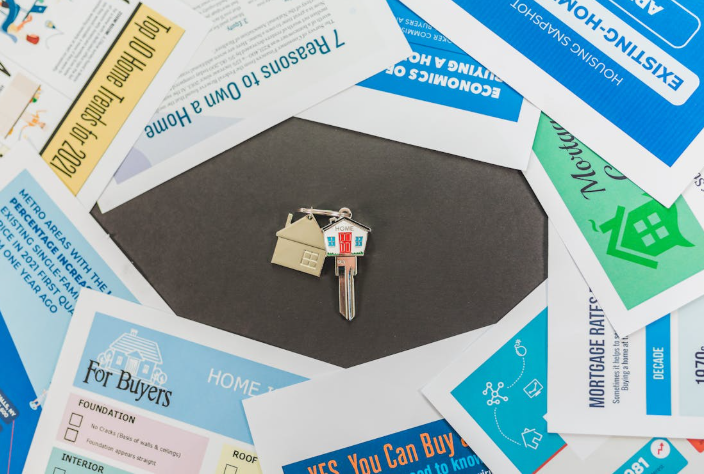
The Home Buying Math No One Explains But Everyone Should Know
A recent report found that over half of first-time homebuyers didn’t realize how much they would pay in total for their homes after interest and fees. That’s not surprising. Most buyers only focus on the price listed online or on the “for sale” sign. But that number doesn’t reflect the full cost of homeownership.
There’s a lot more math involved than most people expect. Between loan terms, interest, taxes, and other hidden costs, the true amount you’ll spend can be far higher than the original price tag.
This article breaks down the real math behind buying a home.
1. Why the Sale Price Isn’t the Final Cost
When people talk about buying a $400,000 home, they often assume that’s the total they’ll need to pay. But that figure is only the beginning. The final amount includes interest, taxes, insurance, and closing costs.
On top of that, closing costs can range from 2% to 5% of the sale price. That means another $8,000 to $20,000 upfront. Property taxes and homeowners insurance add to your yearly cost as well. Many buyers don’t budget for these expenses and are shocked when the bills start adding up. Understanding the full cost helps prevent overspending or stretching your budget too far.
2. How Interest Rate Changes Impact Total Cost
A small change in your interest rate can have a big effect on how much you pay. For example, a 1% difference on a 30-year loan can add or save you tens of thousands over the life of the mortgage.
This is why it’s important to compare different rate scenarios before locking into a loan.
One way to understand these differences clearly is to use a mortgage payment calculator with interest. It lets you enter various rates and see exactly how they affect your monthly payment and total loan cost. This kind of tool makes it easier to spot the real impact of even minor rate changes—so you can plan your budget with more confidence.
3. What Monthly Payments Actually Include
Many people think their monthly mortgage payment only covers the loan. That’s not true. Your payment typically includes principal, interest, property taxes, homeowners insurance, and possibly private mortgage insurance.
If your new home is part of a homeowners association, you’ll have dues on top of that. It’s important to know what’s included so you can budget accurately. This is where a mortgage payment calculator with interest can be helpful—it shows the full monthly cost, not just the loan portion.
4. Why Loan Pre-Approval Doesn’t Mean You Can Afford It
Getting pre-approved for a mortgage is a helpful step, but it’s not the same as knowing what you can actually afford. Lenders look at income, credit, and basic debts to set a loan limit—but they don’t factor in your full financial picture. Things like groceries, child care, transportation, or savings goals aren’t part of their math.
That means a lender might approve you for a home loan that pushes your budget to the edge. Just because you can borrow a certain amount doesn’t mean you should. You’ll be the one making the payments every month, not the bank.
It’s important to create your own budget before shopping for a home. Start with your monthly take-home income, subtract all your non-housing expenses, and then see what’s left. That’s your real limit—not the one on your pre-approval letter.
5. Skipping the Inspection Can Cost More Later
In competitive markets, some buyers skip the home inspection to get an edge. But this can backfire. An inspection helps reveal problems that may not be visible during a walk-through. Things like roof damage, water issues, or outdated wiring can cost thousands to fix.
Without an inspection, you might not learn about these problems until after closing. At that point, the repairs are your responsibility. Paying a few hundred dollars for an inspection is a smart move. It protects you from unexpected costs and gives you better insight into the real condition of the home.
6. Property Taxes Can Rise Over Time
When budgeting for a home, many people look at the current property tax bill and assume it will stay the same. But that’s not always true. In many areas, taxes go up as property values increase. Some counties reassess property values after a sale, which can lead to higher taxes shortly after you buy.
It’s important to research how property taxes work in your area. Look at how much they’ve gone up in the last few years. Talk to your agent or local tax office to understand what to expect. Planning for possible tax increases helps you avoid surprises down the road.
7. Don’t Forget About Emergency Funds
It’s easy to put everything you have toward a down payment, but that can leave you exposed. After buying a home, unexpected costs can come up fast—repairs, new appliances, or even job changes. If you don’t have cash set aside, those problems can become financial setbacks.
A healthy emergency fund should cover at least three months of living expenses. That includes your mortgage, utilities, and basic needs. Having this in place before you buy keeps you stable no matter what happens. It gives you room to handle the home—and life—with less stress.
Buying a home is a major financial move. The sale price is just one part of the picture. To avoid costly mistakes, you need to understand the full math—from loan terms to taxes to long-term interest.
The good news is that the numbers are clear once you know what to look for. When you take the time to calculate costs and plan ahead, you’re more likely to find a home that fits both your lifestyle and your budget. That’s not just smart—it’s necessary.
If you want your home to be a solid investment, don’t skip the math. Know the full cost, and make a decision you’ll feel good about for years to come.



